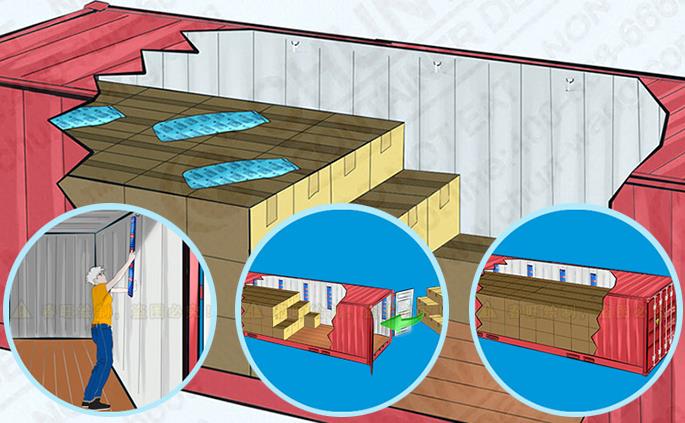As a safe and economical way of transporting goods, taking container shipping is the favorite way for most exporters. But going to sea will encounter the problem of getting wet. Not every time you go to sea, you will encounter very serious losses. Some, the first few times were normal, and when they went to the sixth and seventh time, they suffered serious damage caused by damp. Many people are puzzled. How can I get wet when I put the goods in a tight and tight container? This water is always the root cause of the lack of systematic container moisture protection measures.
First of all, in fact, the container is not strict. All containers will be wet from the loading period and the cargo itself, and no container is completely sealed. The structural structure of the container determines the presence of the gap, especially near the door. System protection measures can effectively prevent serious damage and economic loss caused by moisture. When exporting goods, you need to use containers. Please systematically check the container. Check the container door, wall, floor, and top for obvious holes, gaps, and breakage. Make sure the container is dry and clean.
Second, where does the moisture in the container come from?
The moisture in the container mainly comes from the moisture in the air itself, the cargo itself, the packaging materials (carton, wooden box, etc.), the wooden floor of the pallet, the container, and the leakage of the container. The International Container Lenders Association stated that the moisture of container wood floors should not exceed 14%. In fact, the average container moisture used by many ports is 18%, and even more than 25% of water. The main component of the container floor is cork, which has a high moisture content. Some heavy objects have to be used in wooden cases. The goods themselves, such as cotton and linen products, palm products, etc., also have a high water content. Never use a freshly washed, hot and humid container. Use a dry container. All pallets and other wood products used in the container must be dry. The relative humidity should not exceed 12%. Humidity can be used. Detector, to check the moisture content of packaging materials. Pay special attention to the storage of containers, trays and corners.
In fact, in an ocean environment, the container is like a big steamer. When sealed, the temperature inside the container is 10 degrees higher than the outside temperature, and the temperature and humidity difference between the day and night changes sharply. When the goods are transported from low temperature areas to high temperature areas, or when the storage environment of the goods suddenly changes from cold to hot, the moisture in the trays, wooden boxes, etc. will also be evaporated, and the moisture in the air will be on the surface of the goods or on its packaging. When it is condensed into water, the cargo itself will also effluent. When the container enters the low temperature area from the high temperature area, the internal environmental temperature changes from high temperature to low temperature to reach the dew point temperature. The water vapor will condense into water droplets and condense on the top and inner walls of the container, and finally drip onto the cargo. This is why the goods are wet.

Chunwang Friendly Tips: Please use container desiccant to prevent moisture protection measures in advance. The goal is to absorb moisture from the air to reduce the amount of moisture entering the container. The amount of container desiccant used depends on the type of cargo, the length of the voyage, and the acceptable level of damage. Generally, a 20-foot cabinet is recommended to use more than 6 1 kg container desiccant, such as Chunwang's CODC-91-10 model. Hang the container desiccant on the hanging loop on the inner wall of the container. If the moisture content of the packaging materials in the container is high, if the wooden boxes, trays, etc., the amount of container desiccant should be increased. Valuable goods should be better protected and increased in dosage. It is also possible to additionally tiling some CODD-91-10 type container desiccant on the carton.

In short, the cost of using desiccant is very low, far less than the goods themselves. It is a very effective solution to protect goods at a very low cost.







All trademarks shown here are for reference purposes only. They are the property of their respective owners, and we are not authorized to sell items bearing such trademarks.
